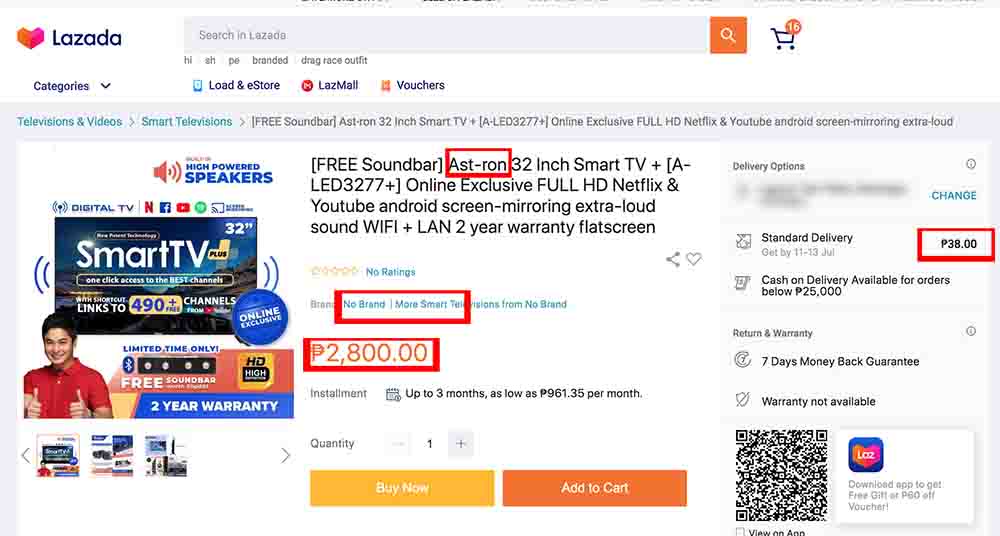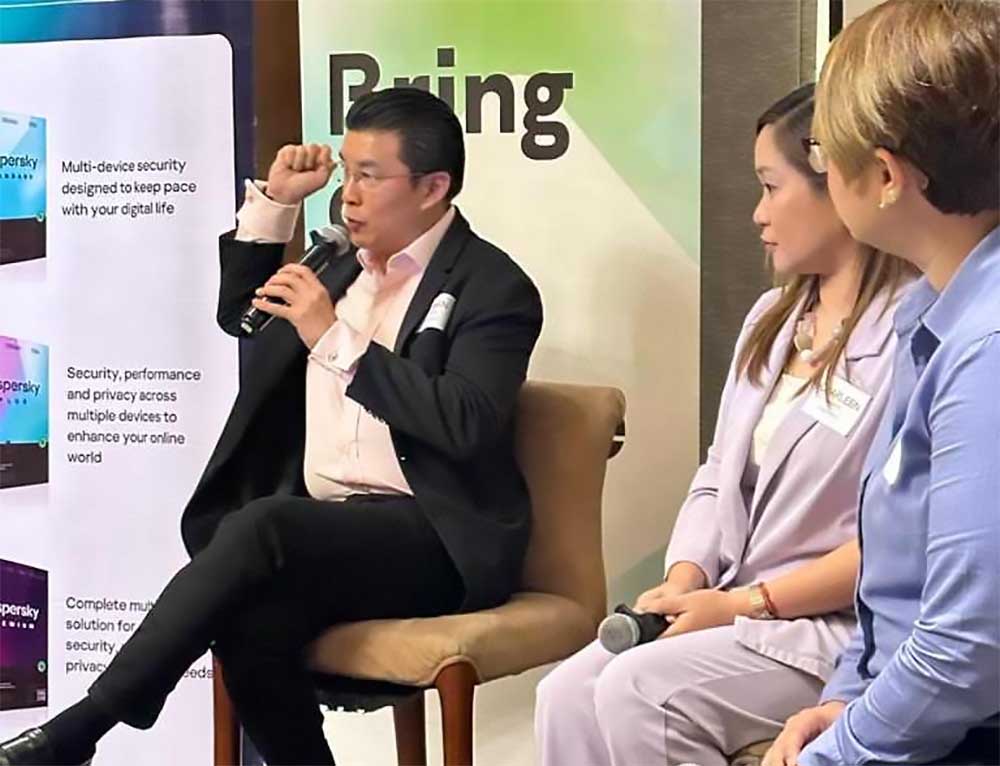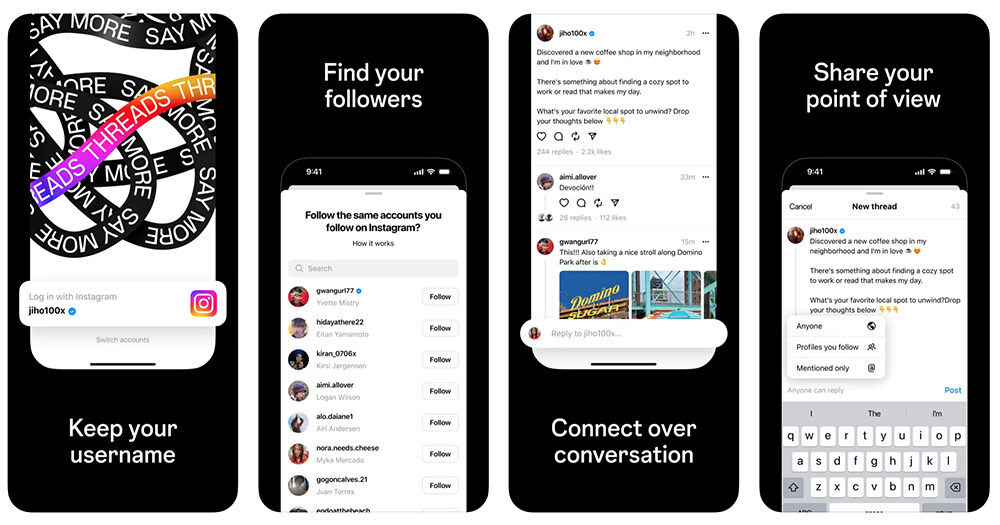My first encounter with a fraudulent seller on Lazada
I WAS a victim of an fraudulent transaction on Lazada recently. The seller, called adriae (spelled with lowercase letters) sold me devices worth P4,422.73.
After a week of waiting I received a tiny package, the size of a letter envelope which listed the items that I ordered–2 stand fans, a TENS machine and a desk cooler. I was scammed. And I was not the only one, upon investigation, six other people were fooled by this Hong Kong based supplier.
I went through the refund process, made easy by Lazada’s reporting process, allowed me to file a case which the supplier would make a decision on. I was ready for a long haul, having read about how scammers and frauds move about in any online shopping platforms, not just Lazada.
With ‘adriae’ the scam goes like this.
First, you order and they send wet tissues. You then complain and file for a refund. The system will also process this. Next, the refund will be issued selectively. In my case, only the cheapest item, the cooler fan was refunded at first.
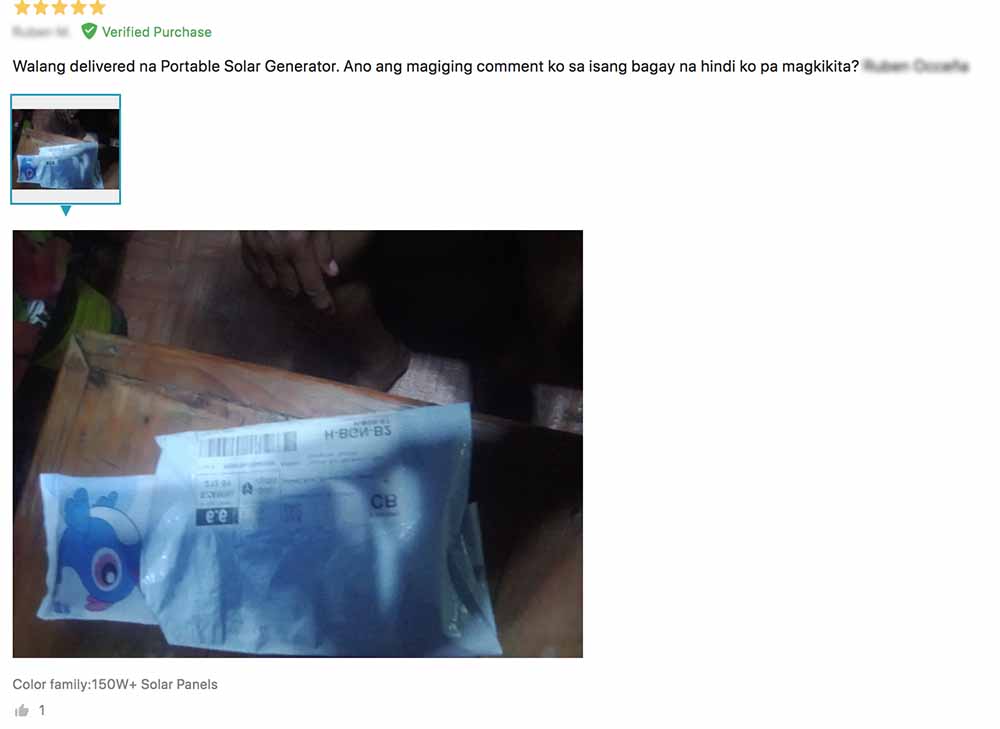
Then a new complaint for refund will be filed, at which point Lazada intervenes and the all the purchases were marked as refunded.
When I checked however, and to its credit, within 24 hours my complaint went from refund. But still unresolved is the issue of why there is a P200 to P400 discrepancy in the amount refunded and the amount I paid for.
Scammers like adriae use this technique to mulch from buyers, in my case getting over P1000 from what is owes me. My refunds were marked as “orders with anomalies.” I went back to Lazada to get the full refund and I was assured that Lazada itself would fill in the discrepancy.
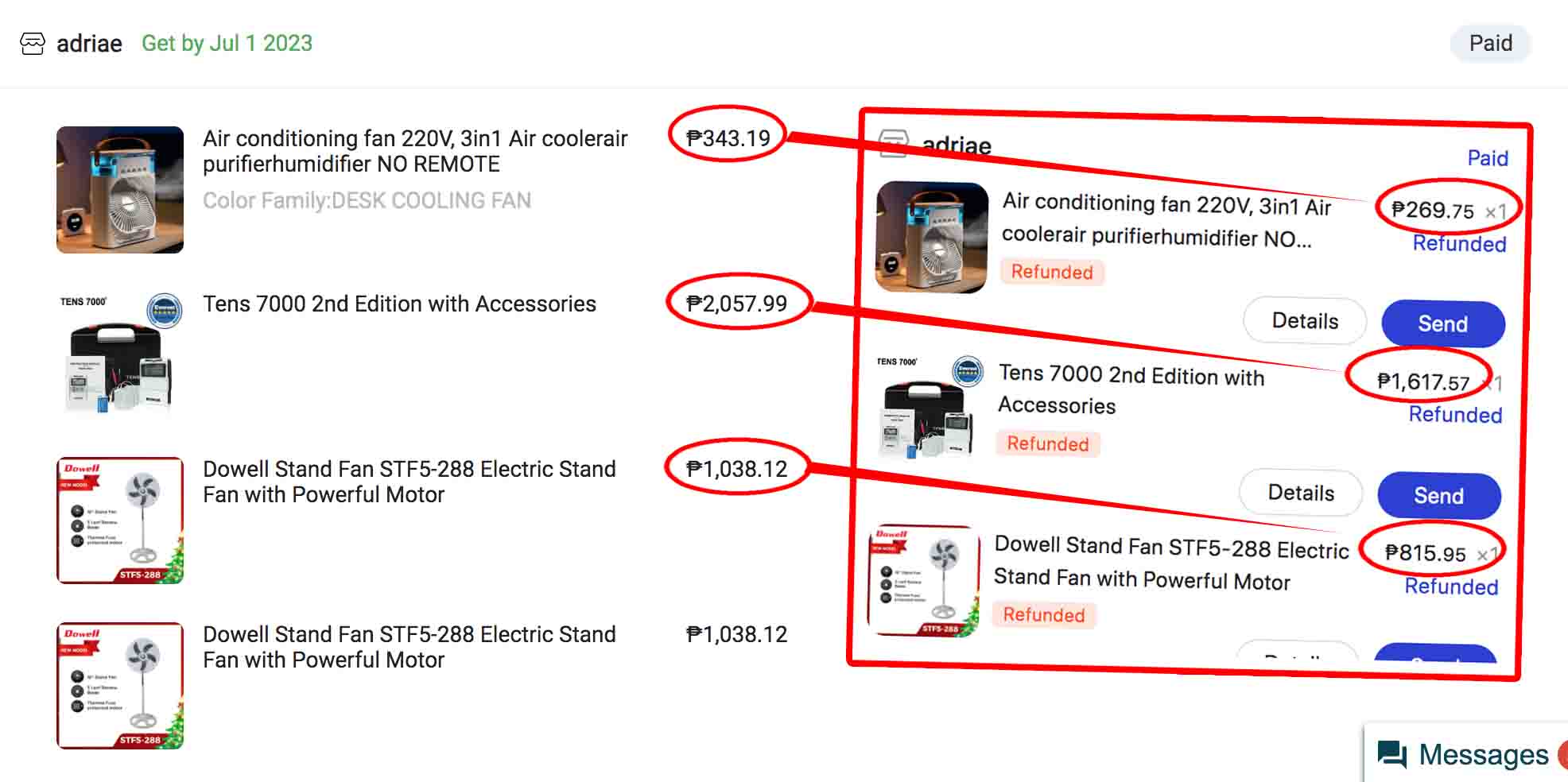
This episode taught me a couple of lessons and categorized these by modus.
- Fraudulent sellers: These individuals create fake seller accounts to deceive unsuspecting buyers. They advertise counterfeit or non-existent products, collect payments, and disappear without delivering the goods or like in the case of adriae, delivery wet tissues so that in the online shopping platform’s system, a delivery was made and a refund needs to be processed.

Here is an example of a fraudulent ad. The red flags are everywhere. A slightly different spelling for an actual and very reputable brand name. A super cheap price to attract buyers. An impossibly cheap delivery charge. Marked “no brand” when the ad names a made up brand. Also note the ad image used is an actual one, from a running ad also on the same platform. - Phishing scammers: Operating through various channels like emails, messages, or advertisements, phishing scammers attempt to trick users into sharing sensitive information such as passwords, credit card details, or login credentials. They often pose as official Lazada representatives or use deceptive tactics to gain the trust of unsuspecting victims. This even happens on Lazada’s own messaging system. Best to read the warning labels on the chat boxes well.
- Hacking and data breach: This is a higher form of attack, where cybercriminals target ecommerce platforms to gain unauthorized access to customer databases. They aim to extract personal information, including names, addresses, and payment details, which can then be used for identity theft, fraudulent activities, or sold on the dark web.
The experience also made it clear that Lazada has a system for managing situations like mine. I checked their policy section and user guidelines section as well as its own protection clauses and found out that it implements the following:
- Account verification: Lazada has implemented a stringent verification process for sellers, requiring them to provide legal documents and identification to ensure legitimacy. This helps to filter out fraudulent sellers and protect buyers from scams. There is one flaw however in this system–foreign companies are more difficult to investigate and run after.
- Secure payment gateways: Lazada employs secure payment gateways, including encryption technology and multi-factor authentication, to protect customer payment information. This ensures that financial transactions are conducted safely and securely.
- Enhanced security protocols: Lazada regularly updates its security systems to address emerging threats. This includes employing advanced firewalls, intrusion detection systems, and robust data encryption to safeguard user data from potential breaches.
- User education and awareness: Lazada actively educates its users about potential scams and fraudulent activities. They provide guidelines and resources to help customers identify fake sellers, recognize phishing attempts, and report suspicious activities promptly.
While e-commerce platforms like Lazada and Shopee have transformed the way we shop, they also face the challenge of online criminals seeking to exploit the system.
Lazada has implemented robust security measures and user education initiatives to combat fraudulent activities. By staying informed, vigilant, and following recommended safety practices, users can play an active role in protecting themselves against online criminals and contribute to a safer online shopping experience for all.
A lot of the security comes from buyers–we need to be more discerning in our purchases and not be swayed by cheap prices or free delivery.



